Homemade Vegan Butter
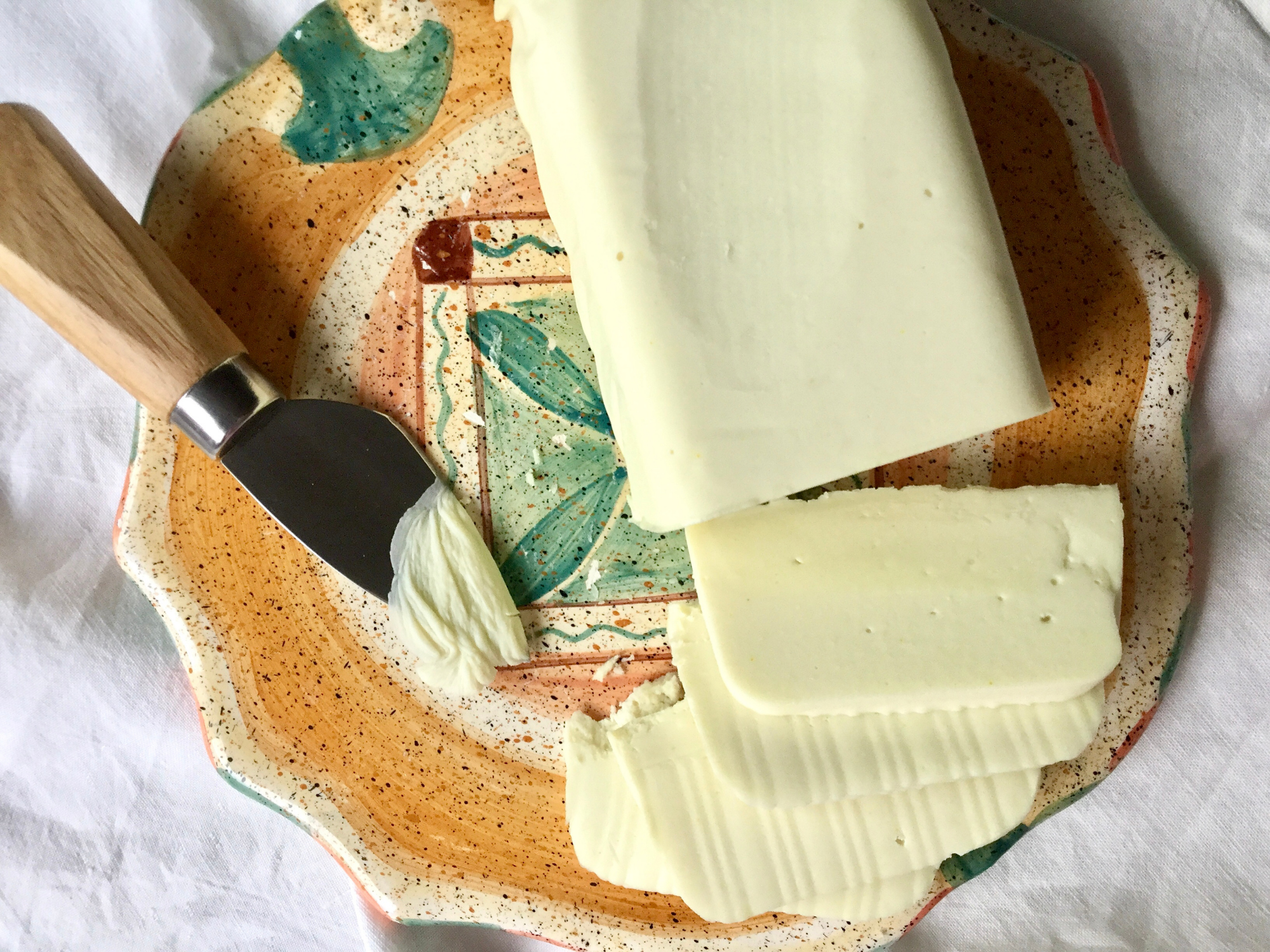
*This homemade vegan butter is adapted from Mattie’s recipe over at veganbaking.net. He goes into the whys and hows of each ingredient and explains the whole process really well if you want to know more about it.*
Anytime I call for vegan butter in a recipe, this is the one I use (unless otherwise stated). It’s smooth, creamy, melts really well and even browns. It’s perfect for baking, cooking, slathering on bread, making compound butter and everything in between. And it has a great flavour and none of the questionable palm oil practices behind it! (Don’t get me wrong, I’m not perfect, I still love the occasional Oreo)
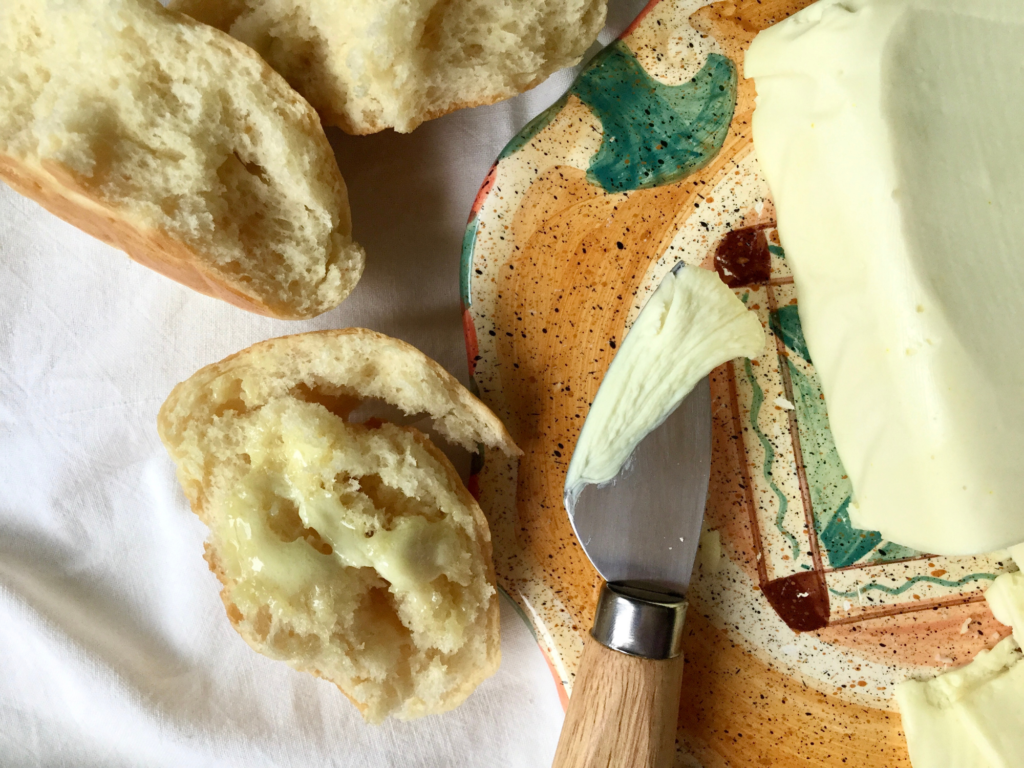
Plus, once you have all the ingredients ready, it’s really easy to whip up and cheaper than buying it (based on the prices and product accessibility in my area, so that might differ). I always have some in the freezer or fridge and very rarely use store-bought vegan butter since this one is great for most recipes.
So if you can’t find vegan butter, don’t like the taste of the store-bought ones, are trying to avoid palm oil or you’re just curious, this recipe might help you out on your mission. I’ve made frostings with it, pastry cream, pâte sucrée, sugar cookies and so many other things and it’s always worked perfectly.
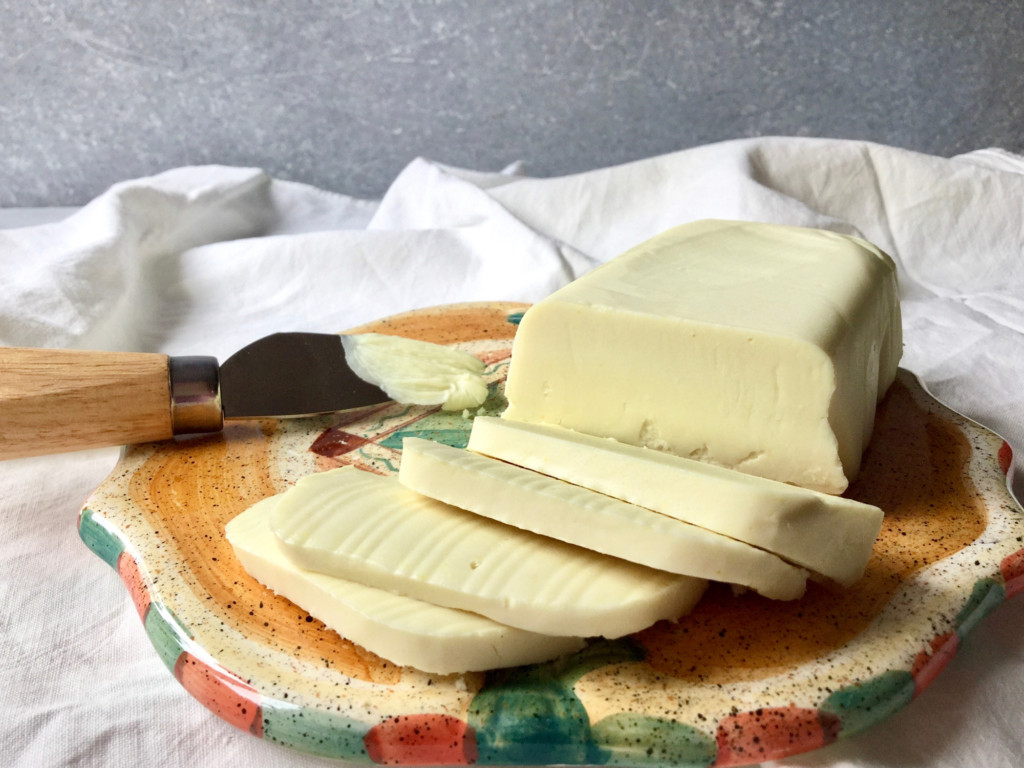
The ingredients
The base of vegan butter
Milk. I use soy milk because it’s high in protein and very creamy. But since we’re not entirely relying on it curdling for flavour, any creamy plant based milk will do, like cashew or even oat. I would avoid a watery one like rice milk though. I use the original (sweetened) version of soy milk since dairy is naturally a bit sweet. But if you prefer to use unsweetened, you can. The flavour will just be a bit different.
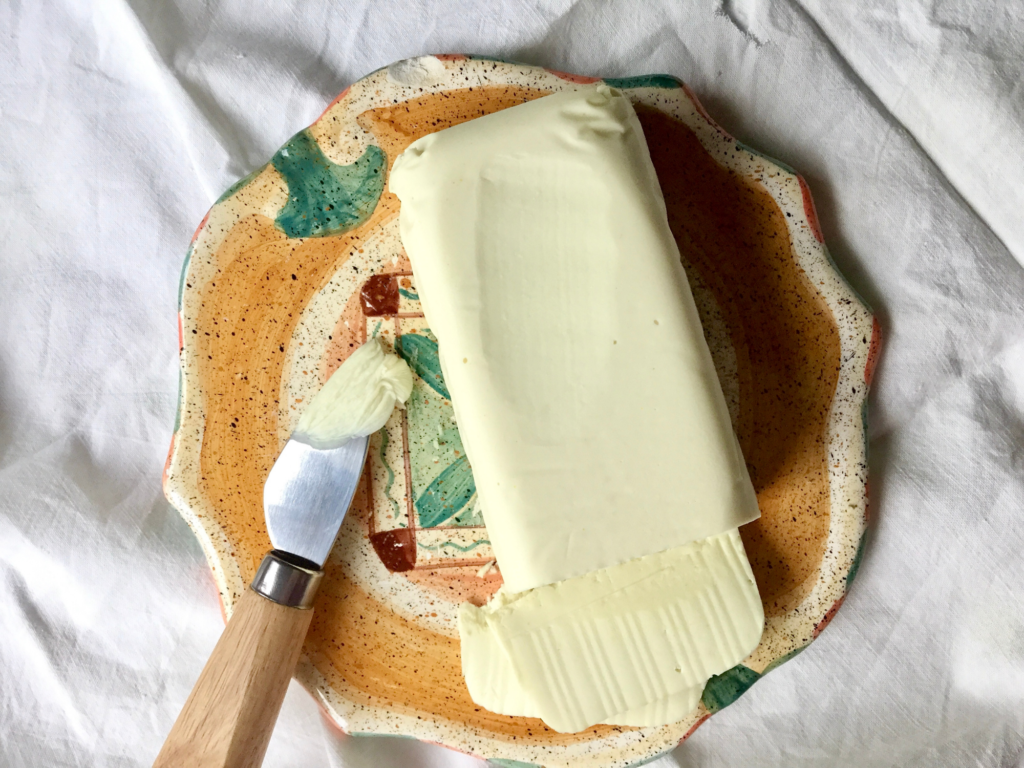
Refined coconut oil and neutral oil. These are the fat components in the butter. Since coconut oil is a solid fat, it mimics butter really well. Make sure to use refined/deodorized coconut oil so your homemade vegan butter doesn’t have a coconut flavour. To avoid it being rock hard, neutral oil is added. You can adjust the ratio of solid to liquid oil to get the texture you want as long as the total amount stays the same. More liquid oil = a more margarine-like spread, but keep in mind that’s less ideal for baking.
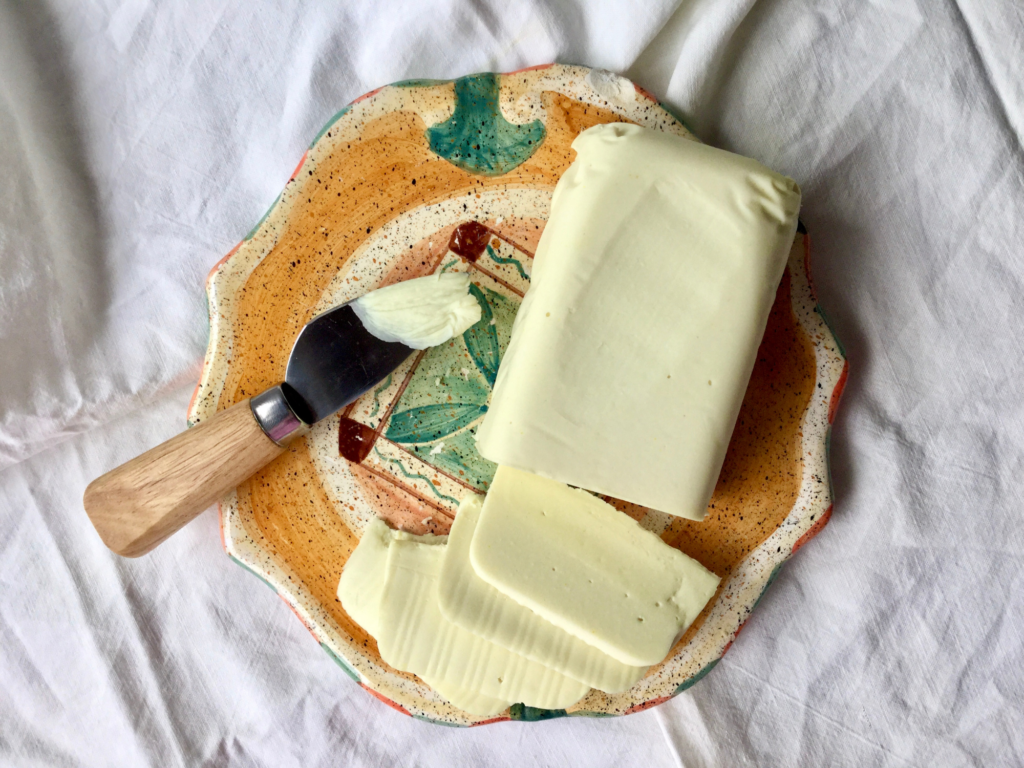
Liquid soy or sunflower lecithin. I’ve tried skipping this ingredient, but it’s really what makes homemade vegan butter (and store-bought) emulsify, melt nicely and have a smooth rather than crumbly texture. It can’t be skipped. You can find it at health food stores, baking supply stores or online, and it lasts a very long time. I’ve had the same bottle for awhile now and I’m barely halfway through it.
Xanthan gum. I made this recipe a few times before finally getting some xanthan gum and it still worked ok. But having made it with it, it really makes a difference. It helps give the butter a very smooth and emulsified texture and give it more pliability.
What makes this vegan butter actually taste good
Yogurt. I use plain unsweetened soy yogurt. It adds flavour, a bit of tang and makes the butter creamier and silkier. It can be replaced with more milk if you don’t have vegan yogurt.
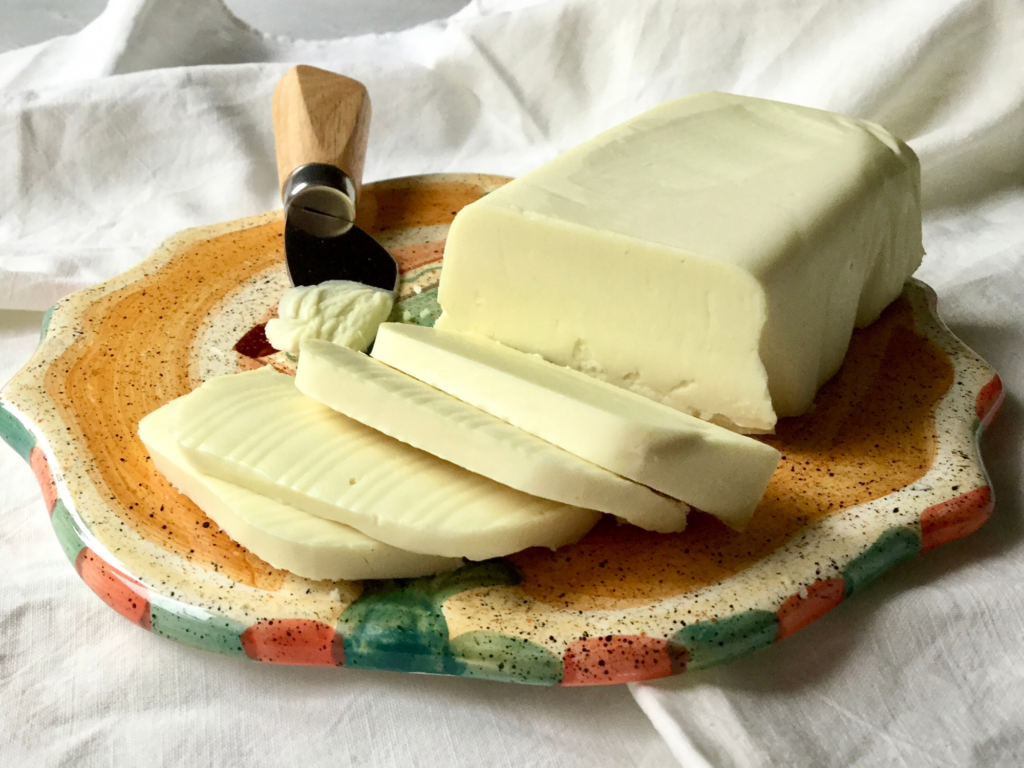
Almond powder. This is what makes this butter brown! It adds fat/creaminess and a buttery taste as well as a brown butter one once it toasts. You could also use hazelnut powder for a stronger brown butter flavour. If you plan on using the butter for sautéing or on high heat, leave it out as almond powder burns so it’ll leave an unpleasant flavour. And if you want a nut-free butter you can omit it.
Apple cider vinegar. To add tang and a funky “cultured” taste to it. Mattie suggests coconut vinegar which is also great and has a milder flavour. You could even use lemon juice in a pinch.
Nutritional yeast. To add additional flavour to the vegan butter.
Salt. I like to salt it to round out the flavour, but if you want an ”unsalted” butter simply add just a pinch.
Turmeric. Totally optional, it’s just for colour and a pinch (a bit less than 1/8 tsp) is all that’s needed.
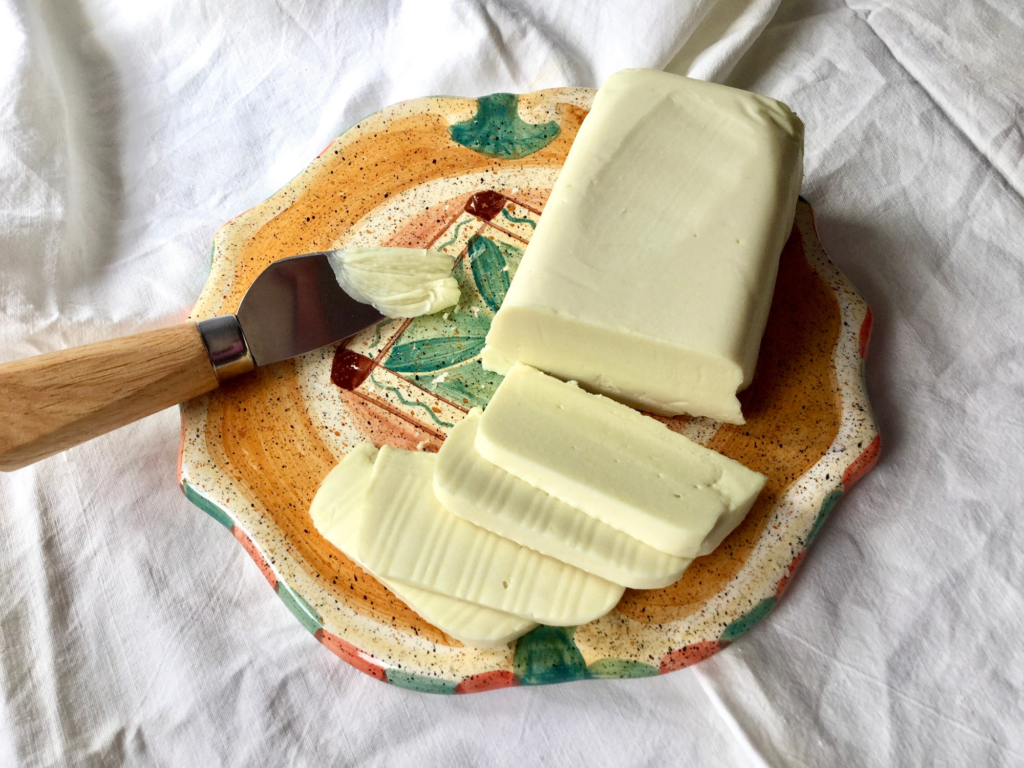
How to make vegan butter
Start by adding the milk, yogurt, nutritional yeast, salt, apple cider vinegar, almond powder, lecithin and turmeric to a blender or food processor and set aside. I made it once with an immersion blender, but the mixture gets pretty thick at a certain point and the motor starts working really hard so I wouldn’t recommend it unless you have a really good one.
Then melt the refined coconut oil. You want it to be melted but not hot, just room temperature. Once it’s melted, add the neutral oil and stir them together. It’s easier if they’re in a cup with a spout since they’re going to be slowly poured into the blender/food processor.
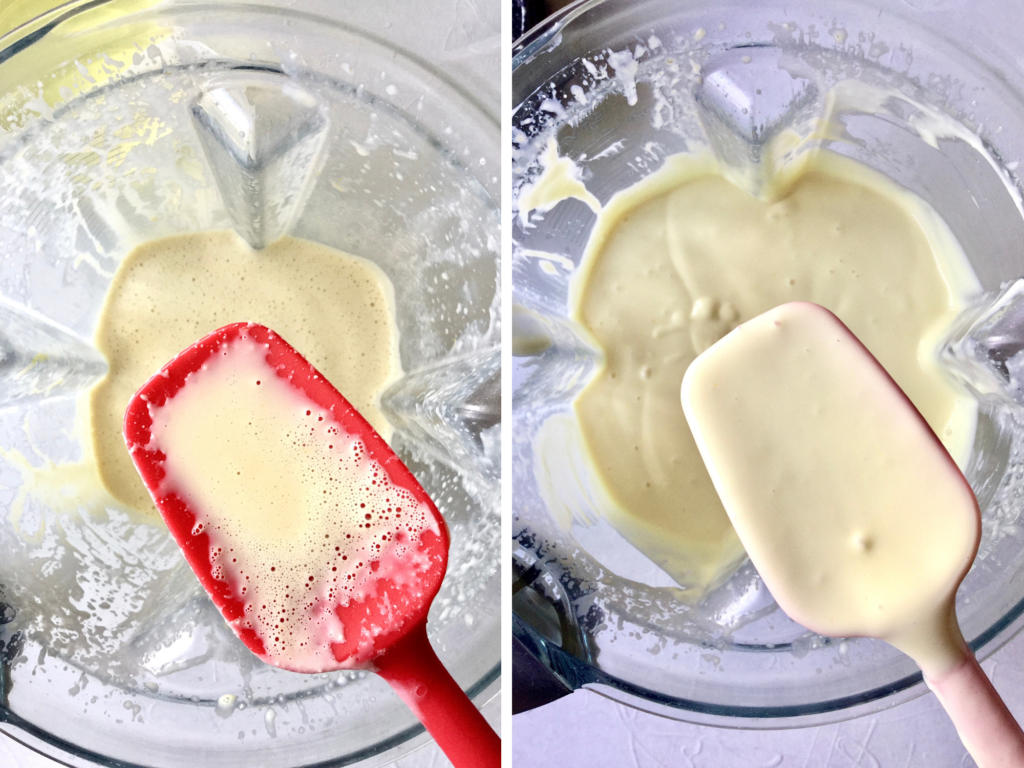
Blend the milk mixture until it’s completely smooth, stopping to scrape down the sides as needed. Then while it’s still running, slowly pour in the oils. Once they’re all in, add the xanthan gum and blend until it’s fully incorporated. Scrape down the sides really well and blend again for a few seconds to make sure everything is well mixed. And that’s it!
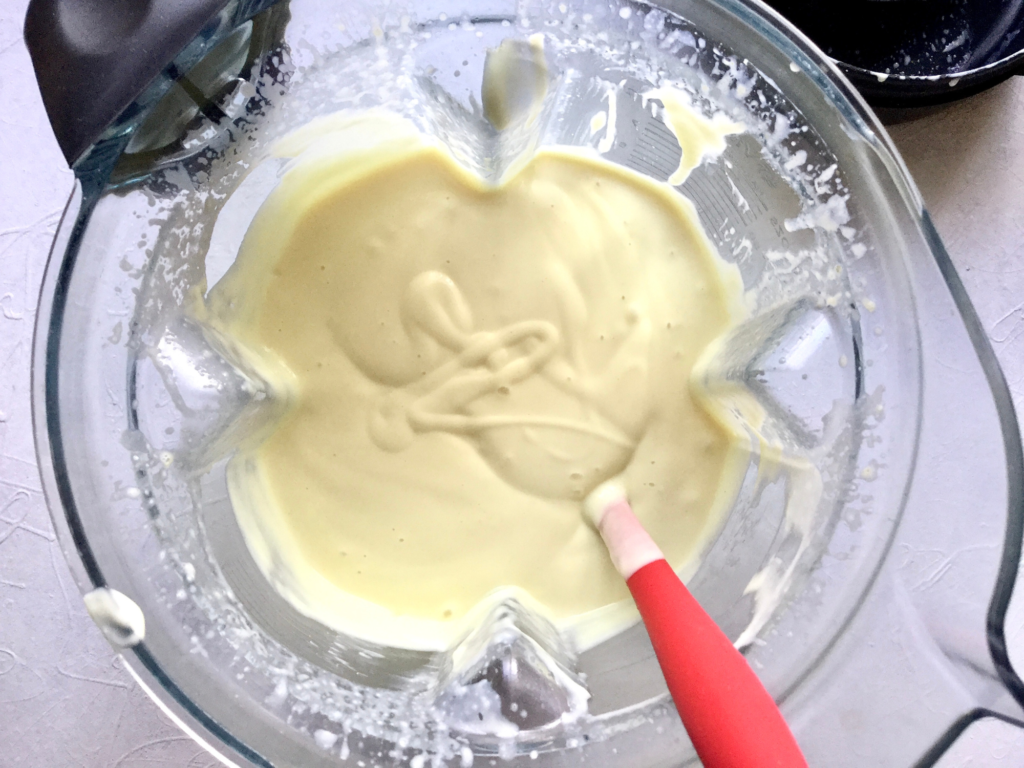
At this point the butter will have a mayo/loose yogurt texture so you can pour it into whatever mold or freezer-safe container you have. A loaf pan lined with parchment, a silicone mold, a tupperware-type container, etc. This recipe makes 1 kg of butter so I prefer to divide it into smaller portions so I can just take out what I need.
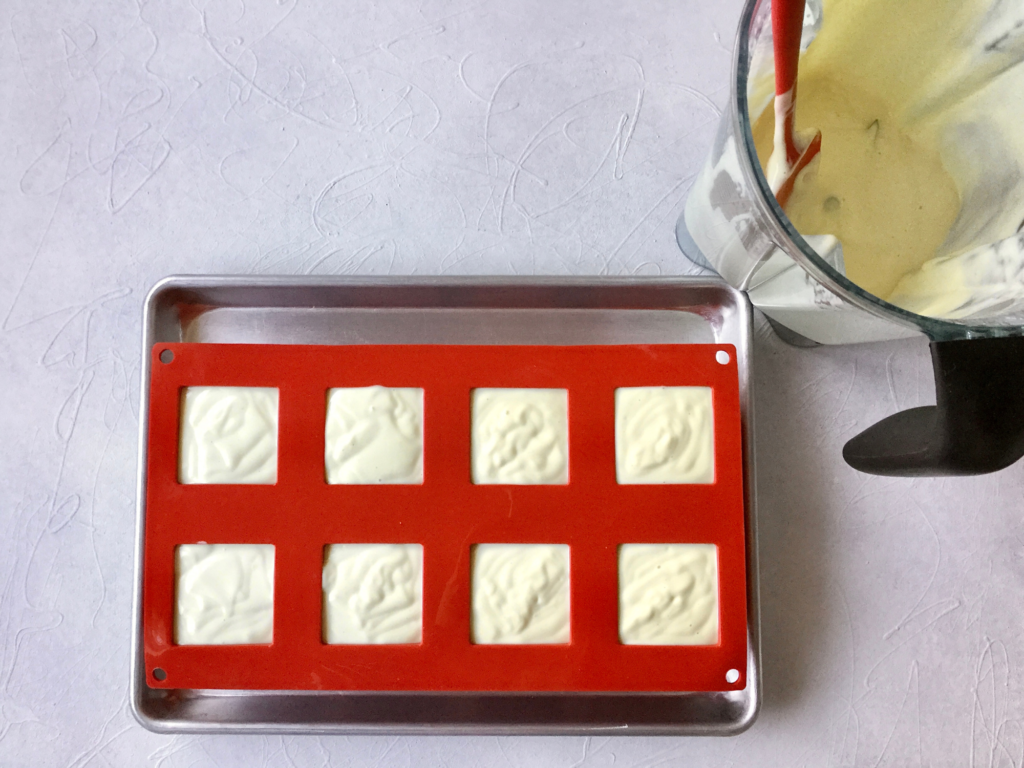
Place the container(s) in the freezer overnight (or at least 6 hours) for the butter to solidify. You can then transfer what you want to the fridge and keep the rest tightly wrapped in the freezer until needed.
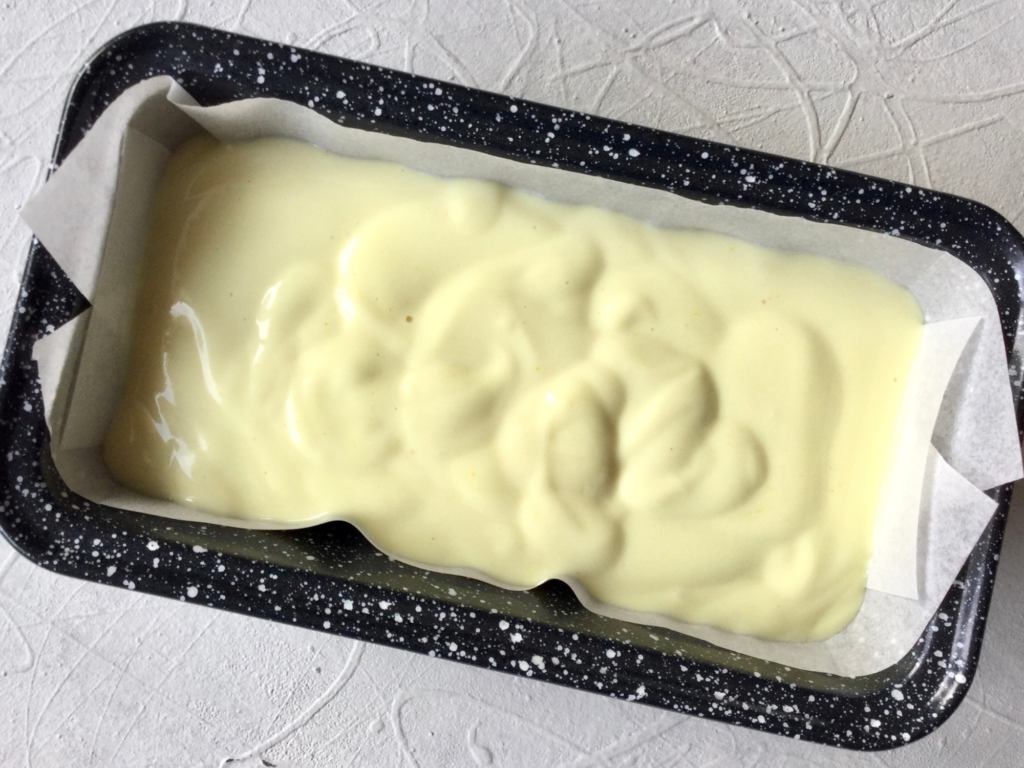
How to brown the vegan butter
As I mentioned, since there’s almond powder in the recipe, you can brown the butter and unlock the lovely aromas of toasted almonds. You can then use it to add more flavour in recipes like cookies, blondies, cakes, etc.
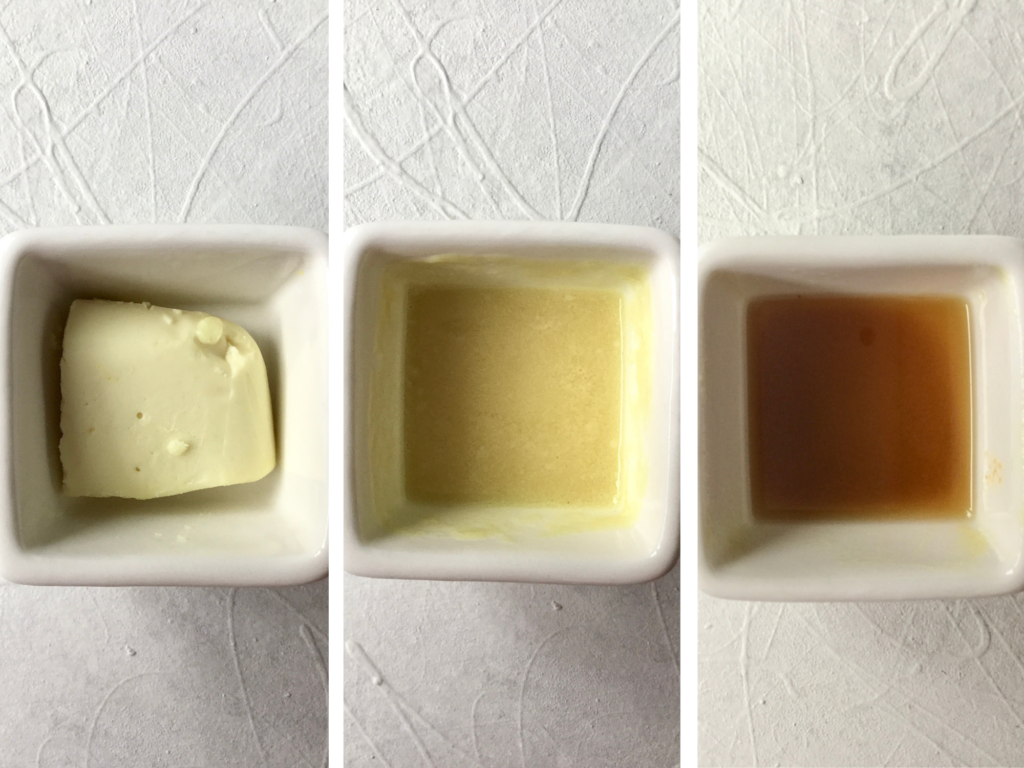
To brown the butter, place it in a saucepan over medium-low heat and stir often to make sure it doesn’t burn. At first it will just melt and it’ll seem like nothing is happening. But then it will start foaming, taking on a golden colour and smell really good.
Don’t push it too far or it’ll burn, so once it gets to a golden brown, take it off the heat and pour it into another container to stop the cooking.
How to store vegan butter
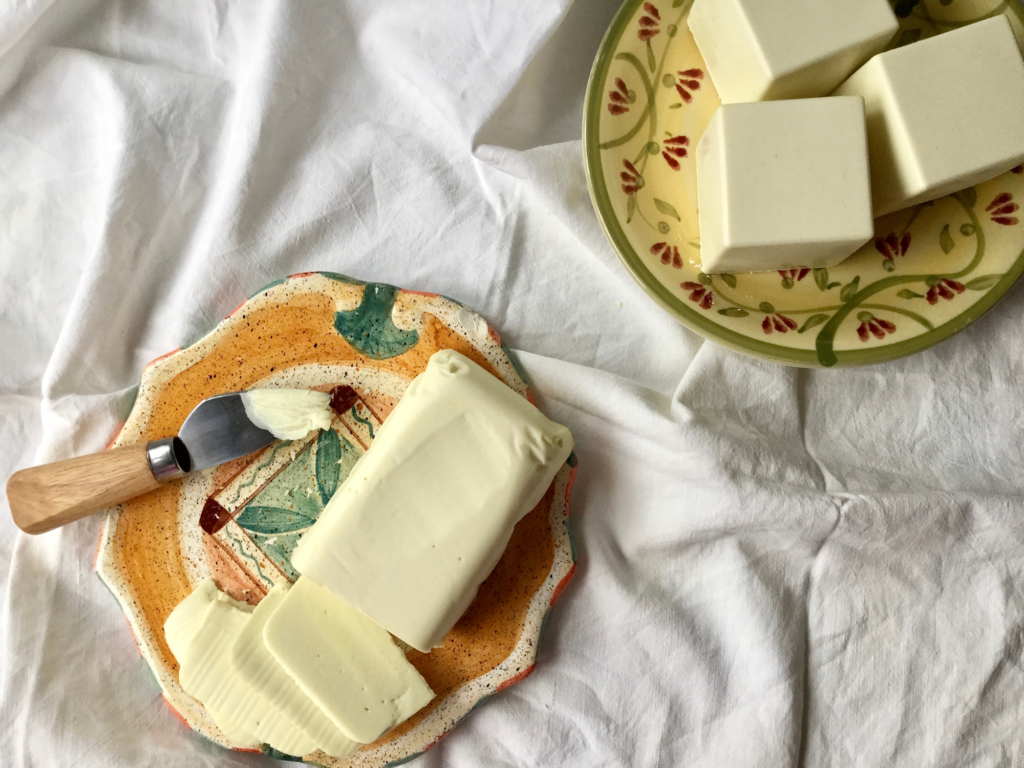
Once it’s solidified, you can store it in the fridge for about 2 weeks (3 if you push it) or tightly wrapped in the freezer for up to 6 months. I like to keep just what I need in the fridge and store the rest in the freezer. You can also leave it out to soften at room temperature for up to a day if needed for a recipe. Unless it’s really hot in your kitchen, then I would just take it out 30-60 minutes before.
If you make this recipe please let me know in the comments! All feedback is very much appreciated and I would love to hear from you! You can also tag me on instagram @the.quaint.kitchen or use the hashtag #thequaintkitchen to share your creations!
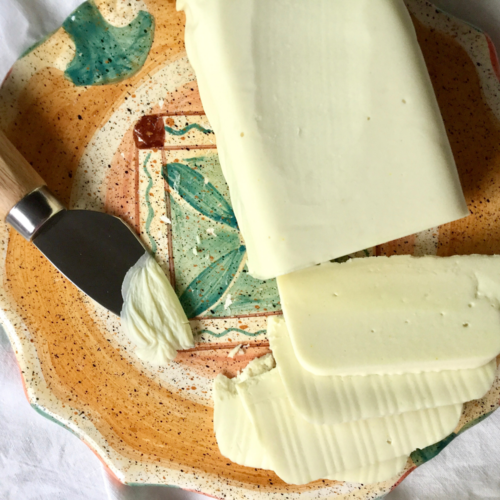
Homemade Vegan Butter
Ingredients
- 300 g soy milk (sweetened or not), or other creamy plant based milk
- 50 g plain unsweetened vegan yogurt, or more milk
- 25 g soy or sunflower lecithin, liquid
- 15 g apple cider vinegar
- 30 g almond powder
- 1 ½ tsp nutritional yeast
- ¼ tsp salt, or to taste
- pinch of turmeric , optional (just for colour)
- 600 g refined coconut oil, melted but not hot
- 100 g neutral oil, (grapeseed, canola, vegetable…)
- ¼ tsp xanthan gum
Instructions
- Add the milk, yogurt, lecithin, apple cider vinegar, almond powder, nutritional yeast, salt and turmeric to your blender or food processor and set aside.
- Melt the coconut oil until just melted (not hot) then stir in the neutral oil. It’s easier if the oils are in a cup with a spout on it as they’re going to be slowly poured into the blender/food processor.
- Blend the milk mixture, stopping to scrape the sides as needed, until completely smooth. Then as it’s still running, slowly stream in the oils.
- Once they’re all poured in, add the xanthan gum and blend well. Stop, scrape down all the sides and blend again for a few seconds.
- Pour the butter into a mold or freezer-safe container of your choice (silicone molds, loaf pans lined with parchment, tupperware-type container, etc.) Instead of large containers I prefer smaller ones so it’s easier to just take out what I need.
- Place in the freezer overnight (or at least 6 hours) to solidify then transfer what you want to the fridge and keep the rest tightly wrapped in the freezer.
Notes
- I strongly suggest making recipes by weight, if you make them by cups I can’t guarantee that you’ll get the same results.
- If you plan on using the butter on high heat, omit the almond powder as it will burn and leave an unpleasant flavour.

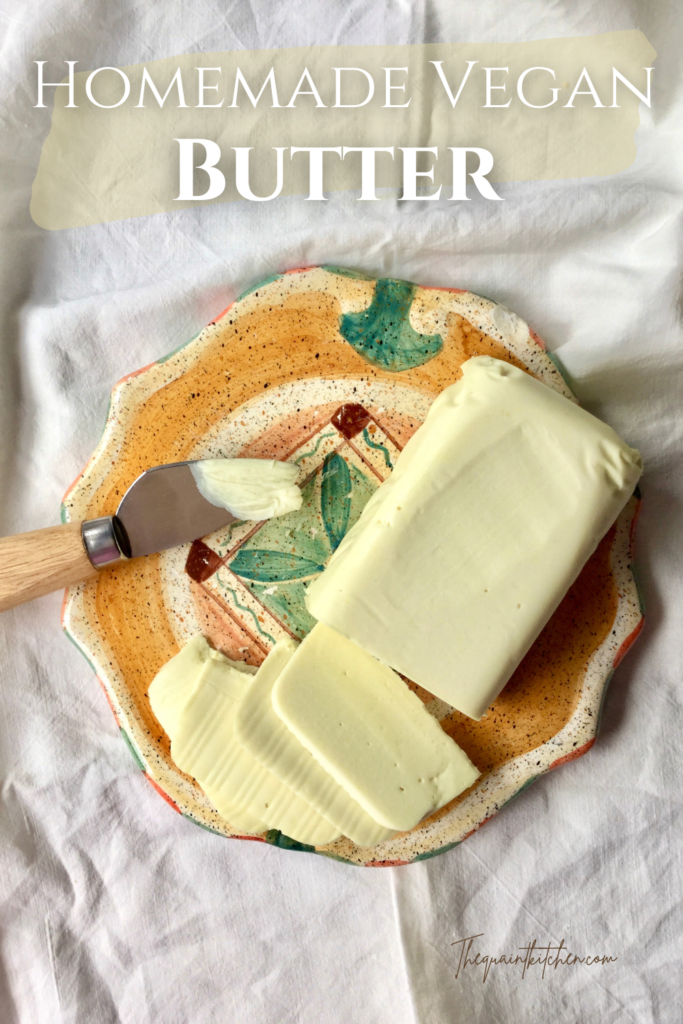
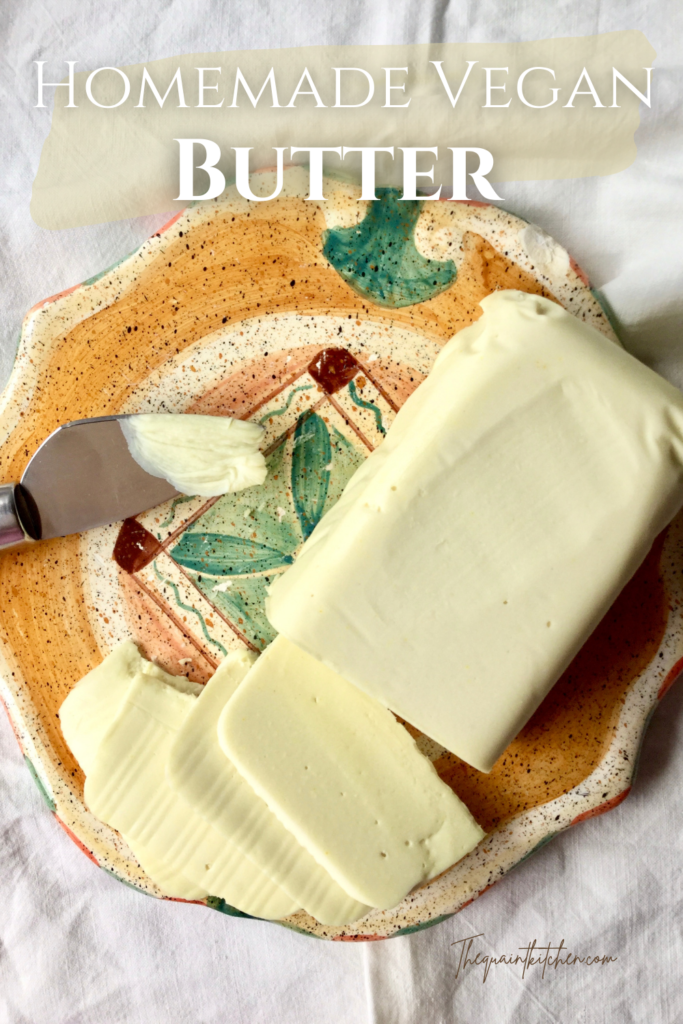
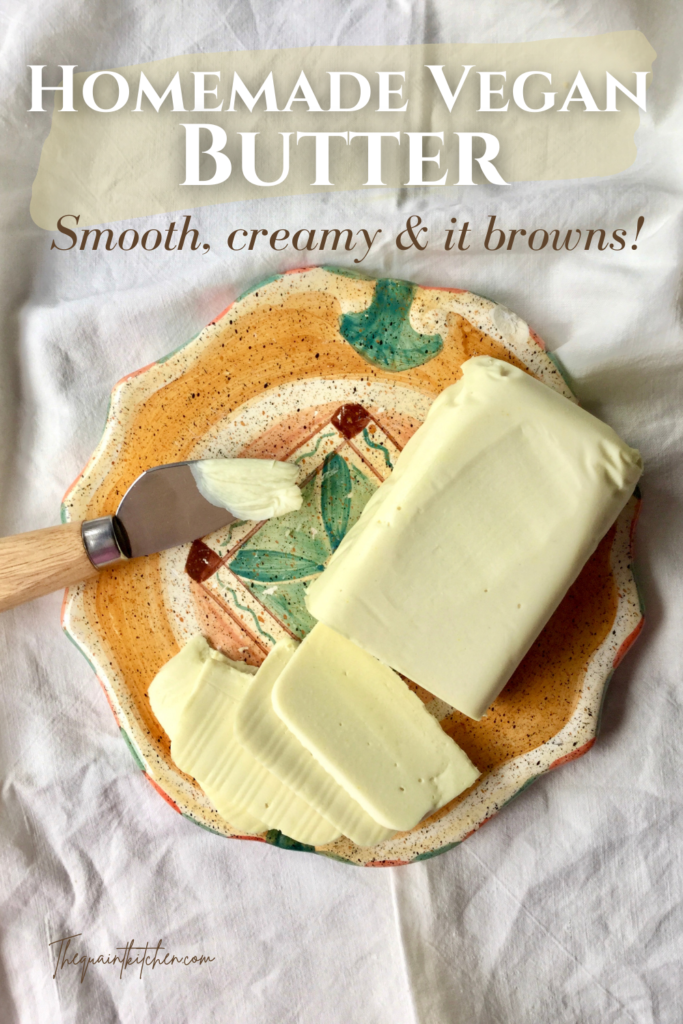
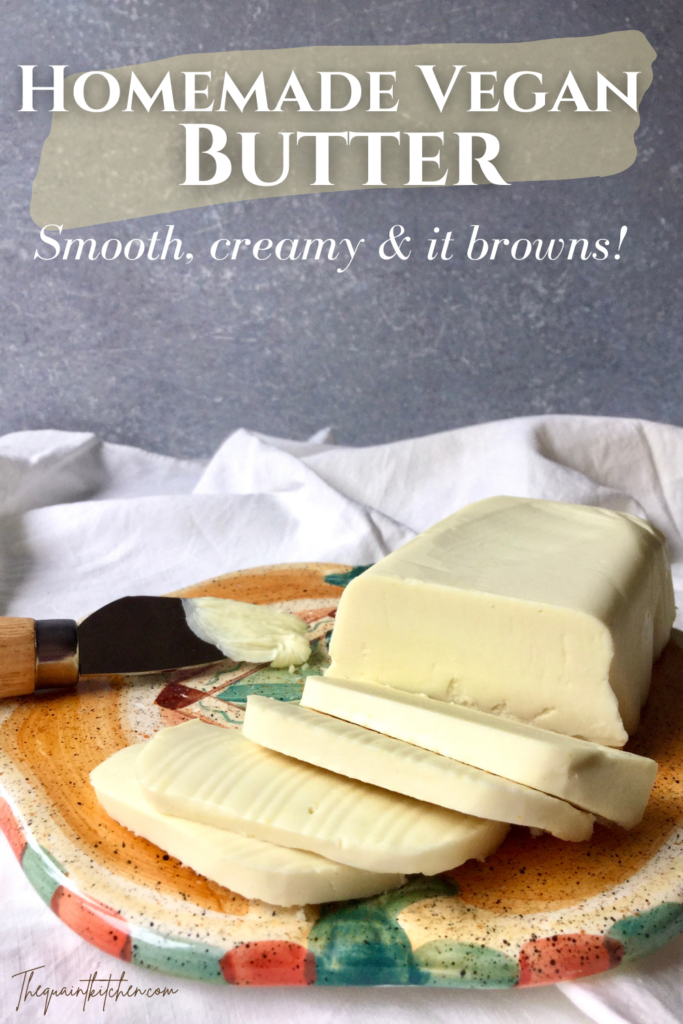
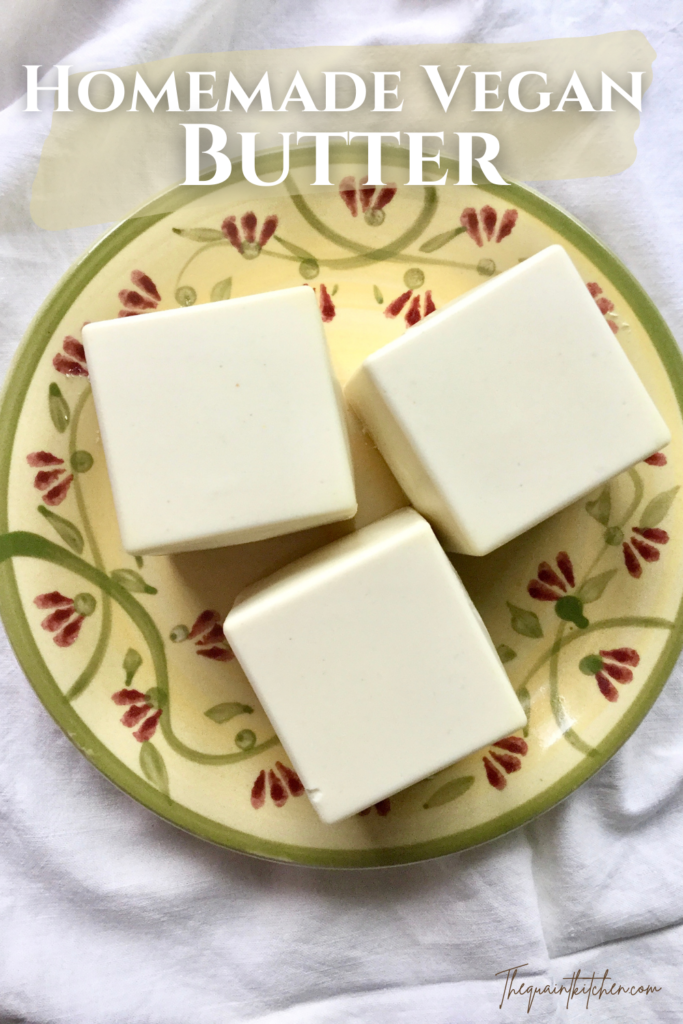
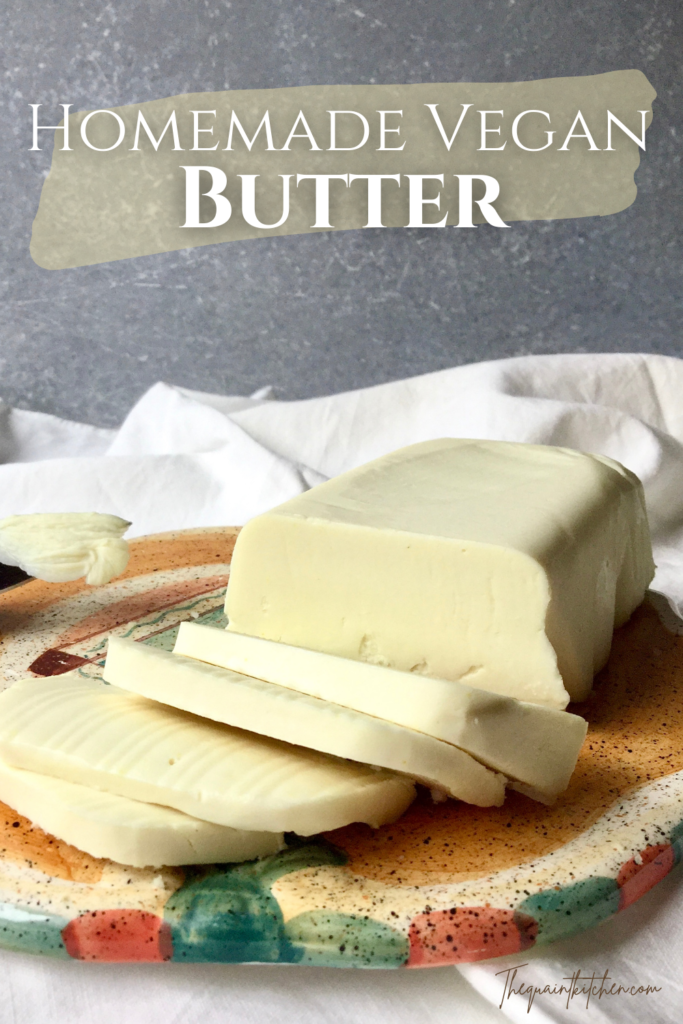
disregard my message about soy lecithin granules. I see someone already asked that in French. I translated it…
No problem! I still replied so at least there’s the english version, sorry again for the late reply!
hi! So glad to find this! Question- how would I convert using soy lecithin powder in this recipe? I just purchased it so would prefer to use it instead of having to buy liquid…do you think it will work? thanks!
Hi Cat! Sorry for the late reply. To be completely honest, I only worked with granulated lecithin once a long time ago, and I didn’t really like the experience because it remained a bit grainy.😅 From what I’ve gathered, they should be left to soak in the liquid (milk in this case) for at least an hour before mixing. As for the ratio, I would maybe go with 40 to 50g as it’s less concentrated, I haven’t found an official answer! I hope it worked out if you tried it!
J’aimerais faire la recette de beurre je n’ai aucune Lécithine et xanthan gum c’est deux ingrédients sont il dans la section vitamine dans les épiceries ? Sont il obligatoire ou as-tu un autre substitution? C’est pas des ingrédients que j’utilise. Merci
Bonjour Brigitte! Désolé pour le délai. Il se peut qu’ils soient dans la section vitamine/santé, la section épices ou la section d’ingrédients de pâtisserie. Ils peuvent aussi être commandés en ligne.
Sinon, c’est possible de faire le beurre sans ces ingrédients, mais comme ils sont émulsifiants, il sera plus cassant et aura plus tendance à trancher, surtout lorsqu’il est fondu. Mais il sera tout aussi délicieux ☺️
This is officially my go-to recipe for vegan butter! I buy unrefined coconut oil, so mine has a slight coconutty taste to it. I don’t mind. This has entirely replaced buying vegan butter from the store. I saved containers from store-bought butter and cream cheese to use as butter molds when pouring. I also used other containers and pre-portioned out 1-stick / 110-gram blocks (American) for easy baking. I entirely omit the almond powder and don’t feel like I am missing out. MY TOP TIP: Do NOT use a spoon or bowl to portion out the lecithin! It made a HUGE mess in my kitchen and on my hands when I went to clean up afterwards. Pour it directly into your blender!
Such an amzing comment thank you Monika, I’m honoured it’s your go-to! Great idea to use those containers, perfect size! Yeah I should’ve mentioned in the post that liquid lecithin is really something, I also just weigh it straight into my blender! Much less mess😅
Bonjour ! 🙂
Je ne trouve que de la lécithine de soja en granules. Est-ce que je peux la substituer à la lécithine liquide? Si oui, en suivant quel ratio et surtout comment je peux dissoudre les granules juste avant? Dans du lait de soja chauffé? Dans l’huile de coco tiède? Merci par avance pour ton retour ! 🙂
Bonjour Lili! Pour être complètement honnête, j’ai seulement travaillé avec la lécithine en granules une fois il y a très longtemps, et je n’ai pas trop aimé l’expérience car c’est resté un peu granuleux.😅 De ce j’ai compris, il faudrait les laisser tremper dans le liquide (le lait ici) pour au moins une heure avant de mixer. Pour ce qui est du ratio, j’irais peut-être avec 40 à 50g comme c’est moins concentré, je n’ai pas trouvé de réponse conclusive! J’espère que t’auras de bons résultats, laisse moi savoir si jamais! 🙂